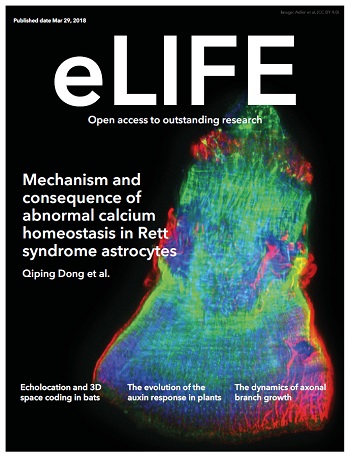钙磷相似基因的功能障碍会通过 MYC 轴损害视网膜血管生成,并与家族性渗出性玻璃体视网膜病变有关
IF 6.4
1区 生物学
Q1 BIOLOGY
引用次数: 0
摘要
家族性渗出性玻璃体视网膜病变(FEVR)是一种严重的遗传性疾病,其特征是外周视网膜血管不完全,相关症状可导致视力丧失。然而,约 50% 的 FEVR 病例的潜在遗传原因仍然不明。在此,我们报告了两种与 FEVR 相关的钙磷脂样基因(CAPSL)杂合子变异。这两种变体都表现出 CAPSL 蛋白表达受损。血管内皮细胞(EC)特异性失活 Capsl 会导致血管径向/纵向进展延迟、内皮增殖/迁移受损,再现了人类 FEVR 表型。CAPSL缺失的人视网膜微血管内皮细胞(HRECs)表现出管形成受损、细胞增殖减少、细胞极性建立和丝状体/纤毛体形成紊乱以及细胞集体迁移紊乱。转录组和蛋白质组分析表明,CAPSL的废除抑制了MYC信号轴,其中MYC靶向核心基因的表达显著下降。此外,对去除了 CAPSL 的 HRECs 和去除了 c-MYC 的人脐静脉内皮细胞的联合分析也发现了类似的转录模式。总之,本研究报告了一个新的 FEVR 相关候选基因 CAPSL,它为 FEVR 的遗传咨询提供了有价值的信息。本研究还揭示了 CAPSL 功能受损可能通过 MYC 轴导致 FEVR,从而揭示了 MYC 信号可能参与 FEVR 的发病机制。本文章由计算机程序翻译,如有差异,请以英文原文为准。
Dysfunction of Calcyphosine-Like gene impairs retinal angiogenesis through the MYC axis and is associated with familial exudative vitreoretinopathy
Familial exudative vitreoretinopathy (FEVR) is a severe genetic disorder characterized by incomplete vascularization of the peripheral retina and associated symptoms that can lead to vision loss. However, the underlying genetic causes of approximately 50% of FEVR cases remain unknown. Here, we report two heterozygous variants in calcyphosine-like gene (CAPSL) that is associated with FEVR. Both variants exhibited compromised CAPSL protein expression. Vascular endothelial cell (EC)-specific inactivation of Capsl resulted in delayed radial/vertical vascular progression, compromised endothelial proliferation/migration, recapitulating the human FEVR phenotypes. CAPSL-depleted human retinal microvascular endothelial cells (HRECs) exhibited impaired tube formation, decreased cell proliferation, disrupted cell polarity establishment, and filopodia/lamellipodia formation, as well as disrupted collective cell migration. Transcriptomic and proteomic profiling revealed that CAPSL abolition inhibited the MYC signaling axis, in which the expression of core MYC targeted genes were profoundly decreased. Furthermore, a combined analysis of CAPSL-depleted HRECs and c-MYC-depleted human umbilical vein endothelial cells uncovered similar transcription patterns. Collectively, this study reports a novel FEVR-associated candidate gene, CAPSL, which provides valuable information for genetic counseling of FEVR. This study also reveals that compromised CAPSL function may cause FEVR through MYC axis, shedding light on the potential involvement of MYC signaling in the pathogenesis of FEVR.
求助全文
通过发布文献求助,成功后即可免费获取论文全文。
去求助
来源期刊

eLife
BIOLOGY-
CiteScore
12.90
自引率
3.90%
发文量
3122
审稿时长
17 weeks
期刊介绍:
eLife is a distinguished, not-for-profit, peer-reviewed open access scientific journal that specializes in the fields of biomedical and life sciences. eLife is known for its selective publication process, which includes a variety of article types such as:
Research Articles: Detailed reports of original research findings.
Short Reports: Concise presentations of significant findings that do not warrant a full-length research article.
Tools and Resources: Descriptions of new tools, technologies, or resources that facilitate scientific research.
Research Advances: Brief reports on significant scientific advancements that have immediate implications for the field.
Scientific Correspondence: Short communications that comment on or provide additional information related to published articles.
Review Articles: Comprehensive overviews of a specific topic or field within the life sciences.
 求助内容:
求助内容: 应助结果提醒方式:
应助结果提醒方式:


